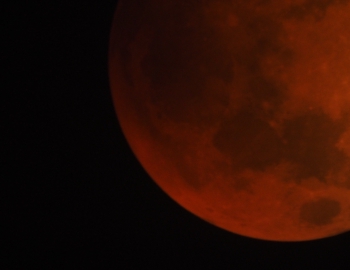on
2015 Lunar Perigee Eclipse
Last night, there was an interesting celestial event: the Earth eclipsed the Sun, casting it’s shadow on the Moon. This happened during lunar perigee (the Moon’s closest point to the Earth in it’s elliptical orbit), which resulted in a negligible increase in the Moon’s apparent size: about 14% larger than normal.
I had worked earlier in the year to get my astronomy gear into a workable state. I de-mounted my telescope from it’s crappy factory mount and slapped it onto a much nicer and sturdier mount I bought around the beginning of summer. My wife got me some 7×50 binoculars for Christmas last year. This is easily the best purchase an aspiring or new astronomer can make, with the addition of a regular camera tripod to support them to reduce vibration and arm-soreness (because you’ll want to look through them for a looong time.)
Last year, I bought a nice camera, as I disliked that my best camera was a smartphone. I’ve messed around with it a little, but not much low-light work. I did get a micro four-thirds to telescope eye-piece adapter.
I set up all of this equipment yesterday around 3pm, several hours before the start of the eclipse so I could get used to everything before the sun went down.
Here’s the rundown of the equipment I used yesterday for the eclipse:
Camera: Olympus OM-D E-M1 m4/3. Used with a telescope adapter or 12-40mm zoom lens.
Telescope : Meade ETX 90 mounted on a Celestron CG-4 equatorial mount with clock drive.
Binoculars : Orion Resolux 7×50 mounted on a camera tripod via an adapter.
The best picture of the night was a composite I made in software using 4 images of different parts of the Moon during the eclipse. It shows the whole lunar disk in red, the result of 10 seconds exposure for each image in the composite.

And here are the rest of the images I captured:










